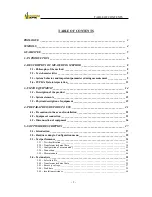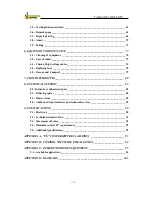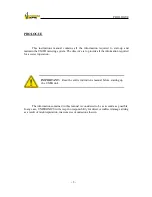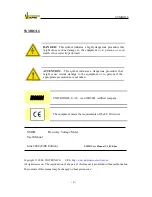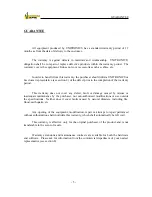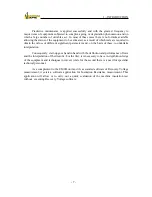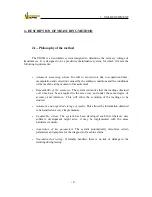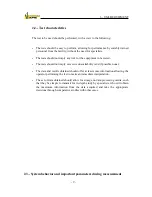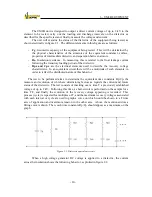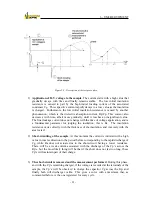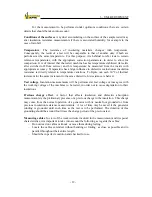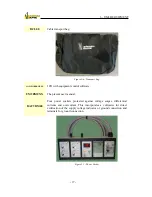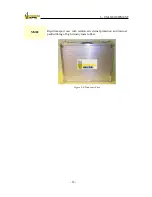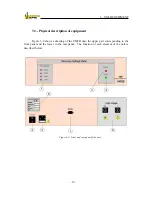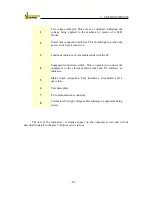
1.- INTRODUCTION
- 6 -
1.- INTRODUCTION
This unit has been especially developed to facilitate the measurement of recovery
voltage in dielectrics. This measurement is especially significant in the case of transformer
dielectrics, where the equipment provides an interpretation of the possible degree of
humidity in the insulation and its evolution with time. In paper-oil dielectrics, the quality of
the insulation is influenced to a large degree by it‟s humidity content. In any case, the unit is
capable of evaluating the status of dielectrics of all types, both in rotating machines and in
transformers, cables and other devices.
Gaining insight into the status of transformers is a complex problem. For this reason,
different techniques have been developed, allowing in-depth studies to be performed on the
different parts into which transformers may be divided.
One of the methods used consists of measuring the recovery voltage of transformers,
this allowing problems such as the following to be detected:
degradation of solid dielectric
degradation of liquid dielectric
contamination of the insulation
Almost all these methods have a peculiarity: the absolute values of the parameters
measured are not usually sufficiently indicative for the results to be evaluated. Rather, it is
their evolution that provides the best information on the status of the winding, as a result of
which it is particularly useful for the results to be memorized and incorporated into databases
for correlation.
This leads to the definition of a
predictive maintenance
policy consisting of the
scheduling, at a suitable frequency, of a series of routine and easily performed tests that
provide sufficient information on the evolution of the assembly through the analysis of
certain parameters. When these analyses detect rapidly evolving situations, or when average
values considered to be potentially hazardous are reached, other more complex testing
techniques will be applied, which may imply the unavailability of the machine for long
periods or even some risk for the integrity of the winding.
The objective of this type of maintenance is to gain accurate insight into the actual
status of the equipment or component and, depending on its condition, to determine what
course of action would be most appropriate: continue normal operation, impose certain
limitations, undertake service or repairs or, finally, undertake replacement. In other words,
the aim is not only to limit unnecessary actuations but also to complete the information
available on the actual status of the equipment, such that suitable decisions may be taken.
Summary of Contents for UM2B
Page 2: ......
Page 67: ...5 SOFTWARE DESCRIPTION 65 Figure 5 46 a First page of the report Recovery Voltage ...
Page 68: ...5 SOFTWARE DESCRIPTION 66 Figure 5 47 a Second page of report Recovery Voltage ...
Page 69: ...5 SOFTWARE DESCRIPTION 67 Figure 5 48 Third page of report Recovery Voltage ...
Page 70: ...5 SOFTWARE DESCRIPTION 68 Figure 5 46 b First page of the report Insulation Resistance ...
Page 71: ...5 SOFTWARE DESCRIPTION 69 Figure 5 47 b Second page of the report Insulation Resistance ...
Page 87: ...8 TECHNICAL SUPPORT 85 Description of fault Materials returned on of of the year Table 8 1 ...
Page 95: ...APPENDIX B CONTROL SOFTWARE 93 APPENDIX A CE CONFORMITY DECLARATION ...



